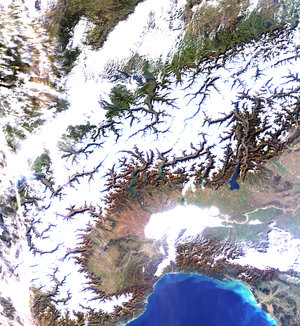Accept all cookies Accept only essential cookies See our Cookie Notice

About ESA
The European Space Agency (ESA) is Europe’s gateway to space. Its mission is to shape the development of Europe’s space capability and ensure that investment in space continues to deliver benefits to the citizens of Europe and the world.
Highlights
ESA - United space in Europe
This is ESA ESA facts Member States & Cooperating States Funding Director General Top management For Member State Delegations European vision European Space Policy ESA & EU Space Councils Responsibility & Sustainability Annual Report Calendar of meetings Corporate newsEstablishments & sites
ESA Headquarters ESA ESTEC ESA ESOC ESA ESRIN ESA EAC ESA ESAC Europe's Spaceport ESA ESEC ESA ECSAT Brussels Office Washington OfficeWorking with ESA
Business with ESA ESA Commercialisation Gateway Law at ESA Careers Cyber resilience at ESA IT at ESA Newsroom Partnerships Merchandising Licence Education Open Space Innovation Platform Integrity and Reporting Administrative Tribunal Health and SafetyMore about ESA
History ESA Historical Archives Exhibitions Publications Art & Culture ESA Merchandise Kids Diversity ESA Brand Centre ESA ChampionsLatest
Space in Member States
Find out more about space activities in our 23 Member States, and understand how ESA works together with their national agencies, institutions and organisations.
Science & Exploration
Exploring our Solar System and unlocking the secrets of the Universe
Go to topicAstronauts
Missions
Juice Euclid Webb Solar Orbiter BepiColombo Gaia ExoMars Cheops Exoplanet missions More missionsActivities
International Space Station Orion service module Gateway Concordia Caves & Pangaea BenefitsLatest
Space Safety
Protecting life and infrastructure on Earth and in orbit
Go to topicAsteroids
Asteroids and Planetary Defence Asteroid danger explained Flyeye telescope: asteroid detection Hera mission: asteroid deflection Near-Earth Object Coordination CentreSpace junk
About space debris Space debris by the numbers Space Environment Report In space refuelling, refurbishing and removingSafety from space
Clean Space ecodesign Zero Debris Technologies Space for Earth Supporting Sustainable DevelopmentApplications
Using space to benefit citizens and meet future challenges on Earth
Go to topicObserving the Earth
Observing the Earth Future EO Copernicus Meteorology Space for our climate Satellite missionsCommercialisation
ESA Commercialisation Gateway Open Space Innovation Platform Business Incubation ESA Space SolutionsEnabling & Support
Making space accessible and developing the technologies for the future
Go to topicBuilding missions
Space Engineering and Technology Test centre Laboratories Concurrent Design Facility Preparing for the future Shaping the Future Discovery and Preparation Advanced Concepts TeamSpace transportation
Space Transportation Ariane Vega Space Rider Future space transportation Boost! Europe's Spaceport Launches from Europe's Spaceport from 2012Latest

North America - MERIS - 20 May 2002
Thank you for liking
You have already liked this page, you can only like it once!
The 20th of May was a cloudy day over the North American landscape. Over water, however, the sky is clear. Along the U.S. East Coast, close to Cape Cod Bay and Long Island, two major American cities, Boston and New York, can be seen. Lake Ontario, Lake Erie and Lake Huron are clearly visible as well. One can distinguish green patterns in Lake Erie showing the fluorescence signal as received by Envisat’s MEdium Resolution Imaging Spectrometer (MERIS). This is due to the presence of phytoplankton. The redder an area is, the stronger the fluorescence from phytoplankton.
An enlargement of the area is shown in the other North American MERIS image available in the image gallery. The enlarged image is a concrete proof that MERIS is fulfilling one of the requirements that drove its development: detect the weak phytoplankton fluorescence signal from space. It is an early demonstration that MERIS outstanding radiometric quality can be used to further understand the complex process regulating the Earth’s climate, along with its bio- and geo-chemical cycles.
Thanks to its radiometric quality, MERIS will be able to detect chlorophyll concentrations of less than 1/10.000.000 of a gram per litre of water. MERIS was also design to detect one of the secondary effects of the light absorption by phytoplankton: the fluorescence. The fluorescence is a mechanism by which, the chlorophyll pigments re-emit a small portion of the blue light they have absorbed. Besides being a good indicator of the presence of phytoplankton, MERIS fluorescence should provide scientists with new data allowing them to better understand the development mechanisms of phytoplankton.
Technical Information:
Instrument: MEdium Resolution Imaging Spectrometer (MERIS)
Date of Acquisition: 20 May 2002
Orbit number: 01153
Instrument features: Reduced Resolution image (1200-meter resolution)
-
CREDIT
ESA 2002 -
LICENCE
ESA Standard Licence and Additional permission may be required
(contact spaceinimages@esa.int for further information)

North America - MERIS - 20 May 2002

Germany - MERIS - 22 April 2002

Casamance region of Senegal - MERIS - 22 March 2002

Switzerland - MERIS, 1 December 2002















 Germany
Germany
 Austria
Austria
 Belgium
Belgium
 Denmark
Denmark
 Spain
Spain
 Estonia
Estonia
 Finland
Finland
 France
France
 Greece
Greece
 Hungary
Hungary
 Ireland
Ireland
 Italy
Italy
 Luxembourg
Luxembourg
 Norway
Norway
 The Netherlands
The Netherlands
 Poland
Poland
 Portugal
Portugal
 Czechia
Czechia
 Romania
Romania
 United Kingdom
United Kingdom
 Slovenia
Slovenia
 Sweden
Sweden
 Switzerland
Switzerland
























